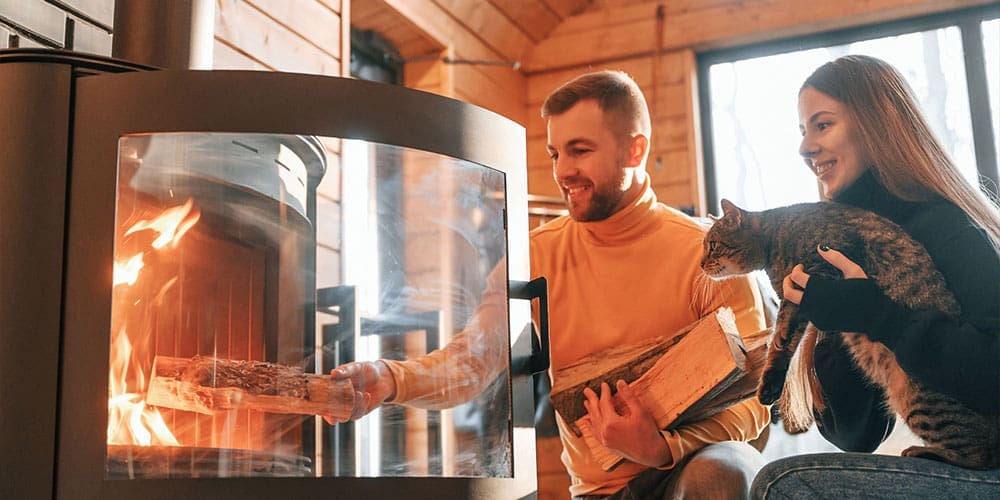Reduce Your Impact
Heating and air conditioning systems are the biggest users of energy in the home, up to 75% of the utility bill. A new high efficiency furnace can save up to 50% in operating costs over a ten year old furnace. Many 1990 and earlier model furnaces have efficiencies of 65% or less. The minimum efficiency furnace that can be sold in the United States today is 78%. Furnaces are available that are up to 96.6% efficient. Air conditioners may look similar, but check the SEER ratings. Higher SEER numbers save more money. A 13 SEER rated air conditioner uses 23% less energy then a 10 SEER unit. 13 SEER will be the minimum efficiency standard by 2006.
Most emissions from homes are from the fossil fuels burned to generate electricity and heat. By using energy more efficiently at home, you can reduce your emissions and lower your energy bills by more than 30%. In addition, since agriculture is responsible for about a fifth of the world’s greenhouse gas emissions, you can reduce your emissions simply by watching what you eat. Here’s how:
| Replace a regular incandescent light bulb with a compact fluorescent light bulb (cfl) CFLs use 60% less energy than a regular bulb. This simple switch will save about 300 pounds of carbon dioxide a year. If every family in the U.S. made the switch, we’d reduce carbon dioxide by more than 90 billion pounds! You can purchase CFLs online from the Energy Federation. | |
| Move your thermostat down 2° in winter and up 2° in summer Almost half of the energy we use in our homes goes to heating and cooling. You could save about 2,000 pounds of carbon dioxide a year with this simple adjustment. The American Council for an Energy Efficient Economy has more tips for saving energy on heating and cooling. | |
| Clean or replace filters on your furnace and air conditioner Cleaning a dirty air filter can save 350 pounds of carbon dioxide a year. | |
| Install a programmable thermostat Programmable thermostats will automatically lower the heat or air conditioning at night and raise them again in the morning. They can save you $100 a year on your energy bill. | |
| Choose energy efficient appliances when making new purchases Look for the Energy Star label on new appliances to choose the most efficient models. If each household in the U.S. replaced its existing appliances with the most efficient models available, we’d eliminate 175 million tons of carbon dioxide emissions every year! | |
| Use less hot water It takes a lot of energy to heat water. You can use less hot water by installing a low flow showerhead (350 pounds of carbon dioxide saved per year) and washing your clothes in cold or warm water (500 pounds saved per year) instead of hot. | |
| Switch to green power In many areas, you can switch to energy generated by clean, renewable sources such as wind and solar. The Green Power Network is a good place to start to figure out what’s available in your area | |
| Plant a tree A single tree will absorb one ton of carbon dioxide over its lifetime. Shade provided by trees can also reduce your air conditioning bill by 10 to 15%. The Arbor Day Foundation has information on planting and provides trees you can plant with membership. | |
| Turn off electronic devices you’re not using Simply turning off your television, DVD player, stereo, and computer when you’re not using them will save you thousands of pounds of carbon dioxide a year. | |
| Unplug electronics from the wall when you’re not using them Even when turned off, things like hairdryers, cell phone chargers and televisions use energy. In fact, the energy used to keep display clocks lit and memory chips working accounts for 5 percent of total domestic energy consumption and spews 18 million tons of carbon into the atmosphere every year! |





